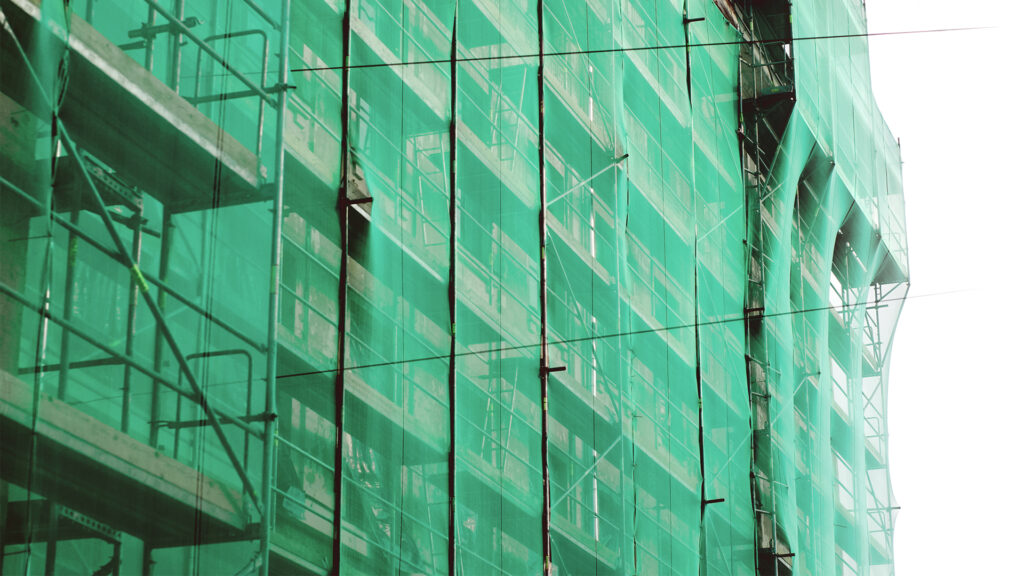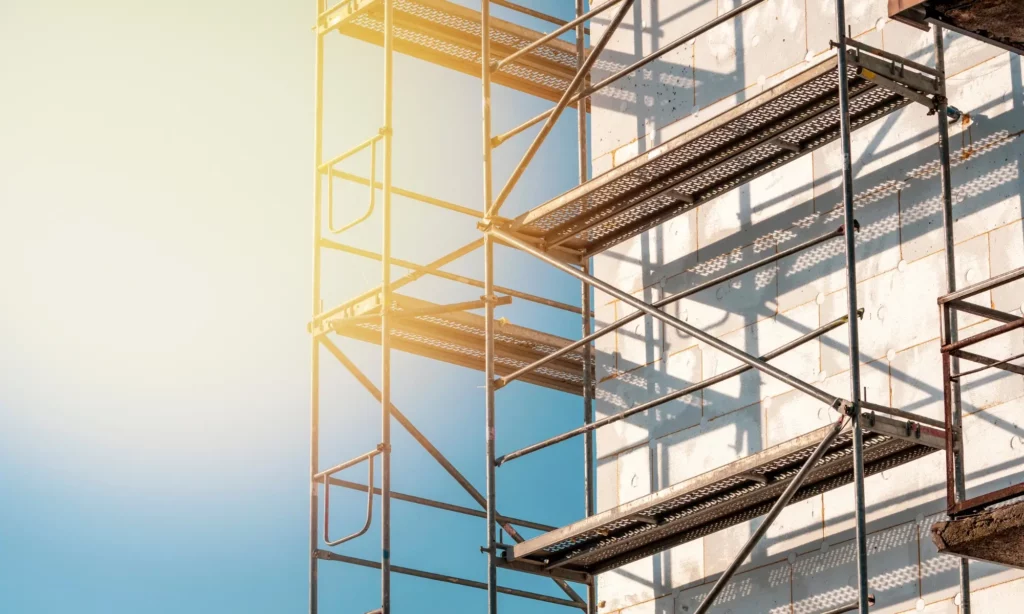How Scaffolding Mesh Improves Site Protection and Worker Safety
Understanding the role of scaffolding mesh in construction
In the construction sector, safety and protection are paramount. Scaffolding mesh is an often-overlooked component, yet it plays a crucial role in enhancing both site safety and the protection of workers. This material acts as a barrier, providing a versatile solution to various challenges encountered during construction projects.
The primary purpose of scaffolding mesh is to create a secure environment, ensuring that debris and materials do not pose a risk to workers on the ground or pedestrians nearby. By containing smaller particles and materials, it helps maintain a safe worksite, reducing the potential for accidents and enhancing overall efficiency in construction activities.
The basic principles of scaffolding mesh
Scaffolding mesh functions by incorporating durable materials that can withstand different weather conditions and the rigours of construction work. Typically constructed from polypropylene or polyethylene, this mesh is designed to be lightweight yet robust, offering high tensile strength and resistance to tearing.
The mesh is usually installed on scaffolding mesh frameworks, filling in the gaps between scaffolding planks. This seamless integration allows for maximum visibility while providing a physical barrier between workers at height and those on the ground, effectively minimising risks associated with falling objects. Moreover, the installation of scaffolding mesh can also serve an aesthetic purpose, as it can be printed with branding or safety messages, promoting a professional image while reinforcing safety protocols.
Key features of high-quality scaffolding mesh
When selecting scaffolding mesh, several key features indicate its quality. First, UV resistance is crucial as it ensures the mesh can endure exposure to sunlight without degrading. This is particularly important for long-term projects where the mesh may be deployed for extended periods.
Another significant feature is the weight of the mesh. A lighter mesh facilitates easier handling and installation, while not compromising on strength and security. Additionally, good scaffolding mesh should have a well-defined weave that can catch small debris without allowing particles to escape, further enhancing site safety. Furthermore, high-quality scaffolding mesh often includes fire-retardant properties, which is essential in construction environments where the risk of fire can be heightened due to the presence of flammable materials and equipment. This added layer of protection not only safeguards workers but also complies with stringent health and safety regulations, ensuring that construction sites meet the necessary legal standards.

Enhancing site protection with scaffolding mesh
Beyond its structural benefits, scaffolding mesh significantly enhances site protection, ensuring that both workers and the public are safeguarded throughout the duration of construction projects. The use of this mesh is not just a regulatory requirement; it is an integral part of creating a safe working environment.
Preventing debris and dust dispersion
One of the most immediate benefits of scaffolding mesh is its ability to prevent debris and dust from spreading beyond the construction site. A properly installed mesh acts as a barrier that catches falling materials and contains dust, ensuring that the surrounding area remains clean and safe for both workers and pedestrians.
This containment method is particularly beneficial in urban settings where construction work must coexist with daily life. The reduction of airborne dust particles not only creates a healthier environment for those working on site but also minimises complaints from nearby residents and businesses. Furthermore, the use of scaffolding mesh can enhance the overall image of the construction project, demonstrating a commitment to safety and responsibility, which can foster goodwill within the community.
Shielding against adverse weather conditions
Scaffolding mesh also provides protection against adverse weather conditions such as rain, wind, and snow. By acting as a shield, the mesh protects both the workers and the materials being used on-site, preventing unnecessary delays due to weather-related issues.
In windy conditions, the mesh helps to stabilise the scaffolding structure itself, ensuring it does not sway or move, which can be a significant hazard. Additionally, by offering some protection from rain and snow, scaffolding mesh contributes to maintaining a safer and more efficient working environment, reducing the likelihood of slips and falls due to wet conditions. The presence of scaffolding mesh can also facilitate better visibility for workers, allowing them to focus on their tasks without the distraction of adverse weather elements. This not only enhances productivity but also promotes a culture of safety, where workers feel more secure and are therefore more likely to adhere to safety protocols. Learn more about hazard on https://hazard.kctcs.edu/
Boosting worker safety through scaffolding mesh
Worker safety is a fundamental concern in the construction industry. The implementation of scaffolding mesh incorporates multiple elements of safety, contributing to the reduction of risk factors commonly associated with construction work.
Reducing risk of falls and injuries
One of the primary causes of injuries on construction sites is falls, often the result of falling objects or slips at height. Scaffolding mesh plays a key role in mitigating these risks by acting as a containment system. It effectively prevents materials from slipping off scaffolding and hitting workers below.
Moreover, mesh that encloses scaffolding can provide a secure boundary for workers, allowing them to operate within a designated safe zone. This delineation is particularly important on busy job sites where multiple teams may be working simultaneously, providing clarity and focus in highly active areas.
In addition to preventing falls, scaffolding mesh can also serve as a barrier against adverse weather conditions, such as wind and rain. By offering some protection from the elements, it allows workers to maintain productivity while reducing the likelihood of accidents caused by slippery surfaces or sudden gusts that could destabilise scaffolding. This added layer of safety is invaluable, especially in regions where weather can be unpredictable, ensuring that projects can proceed with minimal disruption.
Improving visibility and communication on site
Scaffolding mesh not only enhances physical safety but also improves visibility and communication among workers. With mesh that allows for clear sightlines, workers are better able to maintain awareness of their surroundings, which is crucial in coordinating tasks and ensuring safety protocols are followed.
Furthermore, the use of brightly coloured or reflective scaffolding mesh can aid visibility, especially in low-light conditions. This heightened visibility can be pivotal in fast-paced situations, enabling workers to communicate more efficiently and reduce the potential for accidents caused by miscommunication or lack of awareness.
Additionally, scaffolding mesh can be designed to incorporate signage or instructions directly onto its surface, further enhancing communication. This innovation allows for important safety reminders or operational guidelines to be visible at all times, ensuring that workers are constantly reminded of best practices. Such integration not only reinforces safety measures but also fosters a culture of awareness and responsibility among the workforce, ultimately leading to a more cohesive and vigilant team environment.
Regulatory standards for scaffolding mesh
Adhering to regulatory standards is essential in the construction industry. Compliance with national and international safety standards pertaining to scaffolding mesh not only ensures worker safety but also protects companies from potential legal issues.
British and international safety standards
In the UK, scaffolding mesh must comply with various regulations and standards to ensure safety on site. The Health and Safety Executive (HSE) provides guidelines regarding the use and specifications of scaffolding materials, including mesh. Regulation requires that all safety equipment, including scaffolding mesh, meets specific performance criteria.
Internationally, standards set forth by organisations such as the International Organisation for Standardisation (ISO) dictate the requirements for safety and quality in construction materials. Adhering to these regulations assists in maintaining a consistently high level of safety across global construction projects. For instance, ISO 9001 outlines quality management principles that can be applied to the manufacturing of scaffolding mesh, ensuring that the products are not only safe but also reliable and durable under various environmental conditions. To read more about quality click here.
Compliance and inspection procedures
Regular inspections of scaffolding mesh are crucial to ensure ongoing compliance with safety standards. Construction companies must implement robust inspection protocols to monitor the integrity and effectiveness of the mesh used on their sites.
This includes visual inspections for signs of wear and tear, as well as structural assessments to ascertain that the mesh remains securely attached to the scaffolding framework. Documenting these inspections helps maintain compliance records and demonstrates a commitment to safety in the workplace. Furthermore, training personnel in proper inspection techniques is vital; they must be equipped to identify potential hazards and understand the implications of non-compliance. This proactive approach not only mitigates risks but also fosters a culture of safety awareness among all workers on site, ultimately contributing to a safer working environment for everyone involved.

Future trends in scaffolding mesh technology
The landscape of construction safety is continuously evolving, driven by advancements in technology and materials science. The future of scaffolding mesh promises innovative solutions that can further enhance site protection and worker safety.
Innovations in material and design
Recent developments in materials have led to the introduction of advanced scaffolding mesh that is more durable and lightweight. Innovations such as composite materials offer higher strength-to-weight ratios, making them easier to transport and install while providing superior performance under stress.
Design improvements are also on the rise, with manufacturers experimenting with various weave patterns and coatings that improve both functionality and aesthetics. These changes not only enhance safety but also address the needs of a modern workforce that prioritises sustainability and environmental impact. For instance, some manufacturers are now utilising recycled plastics and bio-based materials in their mesh products, significantly reducing the carbon footprint associated with traditional scaffolding solutions. This shift towards eco-friendly materials is not merely a trend but a necessary evolution in response to increasing environmental regulations and the construction industry’s commitment to sustainability.
The impact of digital technology on scaffolding safety
As construction becomes increasingly tech-driven, digital innovations are also improving scaffolding safety. The integration of sensors and monitoring systems can provide real-time data regarding the condition of scaffolding and mesh, alerting teams to potential failures before they occur.
Moreover, the adoption of Building Information Modelling (BIM) tools allows construction managers to visualise scaffolding frameworks digitally, enhancing planning and maintaining safety standards right from the design phase through to installation and operation. This digital approach not only streamlines the construction process but also facilitates better communication among stakeholders, ensuring that everyone from architects to site workers is aligned on safety protocols and structural integrity. Furthermore, the use of augmented reality (AR) in training sessions can help workers familiarise themselves with scaffolding systems in a simulated environment, thereby reducing the likelihood of accidents on-site.
In conclusion, the importance of scaffolding mesh in enhancing site protection and worker safety cannot be understated. With its ability to prevent debris dispersion, shield against weather conditions, and contribute to regulatory compliance, scaffolding mesh stands as a vital component of modern construction practices. As we look to the future, emerging technologies will continue to shape the way we approach scaffolding safety, striving for an even more secure environment for all involved in construction.